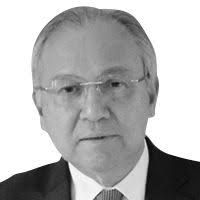The real challenge: How to solve Metro Manila’s worsening traffic

Over the past two years since I took on the job as Philippine Ambassador to the United States, I have noticed a substantial increase in the amount of time it takes to travel from one destination to another, particularly when one needs to pass through EDSA. This becomes more apparent when you’re away from the country for long periods of time.
I have never seen anything like what I have seen during this latest trip home to attend the Global Conference of Heads of Foreign Service Posts at the New World Hotel. Everyone had only one thing to say: The traffic in Metro Manila has become the worst ever.
I’m afraid I have to totally disagree with some of my friends who say there is no commute crisis. Let’s not play semantics here – the situation has already reached crisis proportions. While it is true that you can still move from one place to another, the fact is – people now have to travel an average of four hours each way to get to their destination which in itself is already a crisis, regardless of whether one chooses to describe it as a “transport crisis” or a “traffic problem.”
Why? Because P3.5 billion is wasted every day due to “lost opportunities” according to a 2018 study by the Japan International Cooperation Agency (JICA), with projections that the number could triple by 2030.
Employees who used to work for me say the situation is “not funny anymore.” People have become so sensitive about it that they can no longer make – much less take – jokes about the traffic.
Really, this situation has to be resolved. I’m sorry to say that those who have a contrary opinion about giving the president emergency powers are being narrow-minded and reactionary. The emergency powers would be the only way to cut through all the red tape which can bring everything to a standstill. Unresolved right-of-way issues have delayed vital road projects for years because land owners could not show land titles as proof of ownership, there is no independent appraiser who could assess the property for acquisition, litigation could take years, etc., etc.
The commuting public cannot wait any more. They have been suffering for so long with the lengthy lines they have to endure, sometimes under the heat of the sun or under pouring rain just so they could get a ride to work, to school or make it to an important interview or appointment. Many of these commuters get sick, what with the pollution, erratic weather changes or viruses that circulate inside cramped buses or trains. Worse, the cost of medication adds to their financial burden.
Instead of issuing all kinds of nonsense challenge, what everyone should focus on is the challenge of finding solutions to the monstrous traffic. For instance, a temporary emergency proposal to designate P2P (point-to-point) buses only to ply the whole stretch of EDSA from 5am to 9am, then again at 5pm to 9pm. The idea is to decongest traffic during those peak hours so that no private vehicles will be allowed to travel along EDSA, encouraging people to take public transport.
Given the gravity of the situation, we should be open minded and consider all suggestions coming from people with revolutionary ideas like San Miguel’s Ramon Ang who proposed the idea of building a skyway on top of EDSA.
Definitely, we need traffic experts who can help the government put order in our chaotic streets. Experts from the US and the UK have discussed these with me in the past, and I am prepared to look into these if instructed to do so. I may take the initiative myself and bring this to the attention of Secretary Art Tugade.
Singapore, London, Stockholm, and other cities have been successful in alleviating traffic problems through “congestion pricing” where drivers pay higher fees for entering the busiest streets especially during peak hours. In some systems, toll charges may vary according to the flow or speed of traffic.
Los Angeles, New York City and Chicago are also considering congestion pricing to alleviate people’s frustration and at the same time generate additional revenue to fund improvements in infrastructure, repair subway systems, expand other forms of mass transit, and reduce air pollution. There are also proposals that vehicles with more passengers would be taxed less compared to a vehicle with just one or two occupants. Experts are convinced that congestion pricing can encourage people to take public transportation, resort to carpooling, or travel during non-peak hours.
A Chicago startup is proposing the concept of “transit technology” such as solar-powered sensors mounted on street poles to monitor traffic levels. Drones, electric scooters and autonomous vehicles (driverless cars) are also being considered to make way for a “tech-enabled future” that would reduce congestion and lessen commute times while improving public transport, increasing the efficiency and reliability of trains and buses, and expanding connectivity in areas not well-connected to bus and train stops.
In Brisbane, electric-powered scooters are being considered to replace cars for short commutes by downloading an app that can locate nearby rechargeable scooters that people can leave at their destination.
While other cities in many parts of the world are already looking into the future with the use of technology to solve traffic – here we are, still stuck from four decades ago with the same traffic problem. Talk is cheap – let’s hope our legislators will stop these endless debates. Every single day of delay only adds to the misery of the ordinary Filipino worker.
* * *
Email: [email protected]
- Latest
- Trending

























